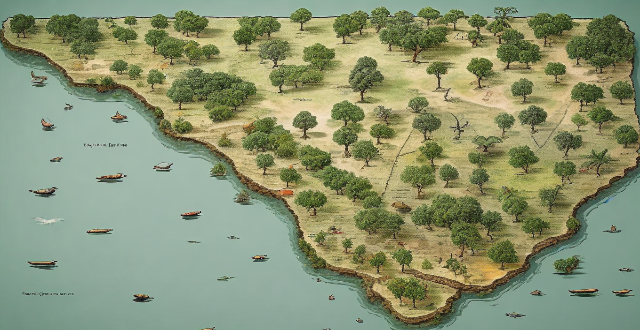Ecological protection areas contribute significantly to the conservation of biodiversity by preserving habitats, protecting endangered species, maintaining genetic diversity, mitigating climate change, and promoting education and awareness. These areas are crucial for the long-term survival of ecosystems and the diverse range of species that depend on them.

How Ecological Protection Areas Contribute to Biodiversity Conservation
Ecological protection areas play a crucial role in conserving biodiversity. These areas are designated to protect and maintain the natural ecosystems, habitats, and species that reside within them. In this response, we will explore how ecological protection areas contribute to biodiversity conservation.
Habitat Preservation
One of the primary functions of ecological protection areas is to preserve natural habitats. By protecting these areas from human activities such as logging, mining, and agriculture, the natural habitats can continue to support the diverse range of species that depend on them. This helps to maintain the balance of ecosystems and prevents the loss of biodiversity.
Species Conservation
Ecological protection areas also contribute to the conservation of individual species. Many endangered or threatened species rely on specific habitats for their survival. By protecting these areas, we can ensure that these species have a safe haven where they can thrive without the threat of extinction. Additionally, ecological protection areas provide opportunities for researchers to study and monitor these species, allowing for better understanding and conservation efforts.
Genetic Diversity
Ecological protection areas help to maintain genetic diversity within species. When populations of a particular species are isolated in protected areas, they can evolve independently from other populations. This genetic diversity is essential for the long-term survival of species as it allows them to adapt to changing environmental conditions. By protecting ecological areas, we can ensure that genetic diversity is maintained, which is crucial for the overall health and resilience of ecosystems.
Climate Change Mitigation
Ecological protection areas also play a role in mitigating the effects of climate change on biodiversity. These areas often contain large tracts of forests, wetlands, and other vegetation types that act as carbon sinks. By absorbing carbon dioxide from the atmosphere, these ecosystems help to reduce greenhouse gas emissions and slow down global warming. Furthermore, ecological protection areas provide refugia for species that may be impacted by changing climate conditions, allowing them to adapt and survive in new environments.
Education and Awareness
Finally, ecological protection areas serve as valuable resources for education and awareness programs about biodiversity conservation. These areas provide opportunities for people to learn about different ecosystems, species, and their importance in maintaining a healthy planet. Through educational programs and outreach initiatives, ecological protection areas can help to raise awareness about the need for conservation and inspire people to take action to protect our natural world.
In conclusion, ecological protection areas are vital tools for conserving biodiversity. By preserving habitats, protecting endangered species, maintaining genetic diversity, mitigating climate change, and promoting education and awareness, these areas contribute significantly to the overall health and well-being of our planet's ecosystems.